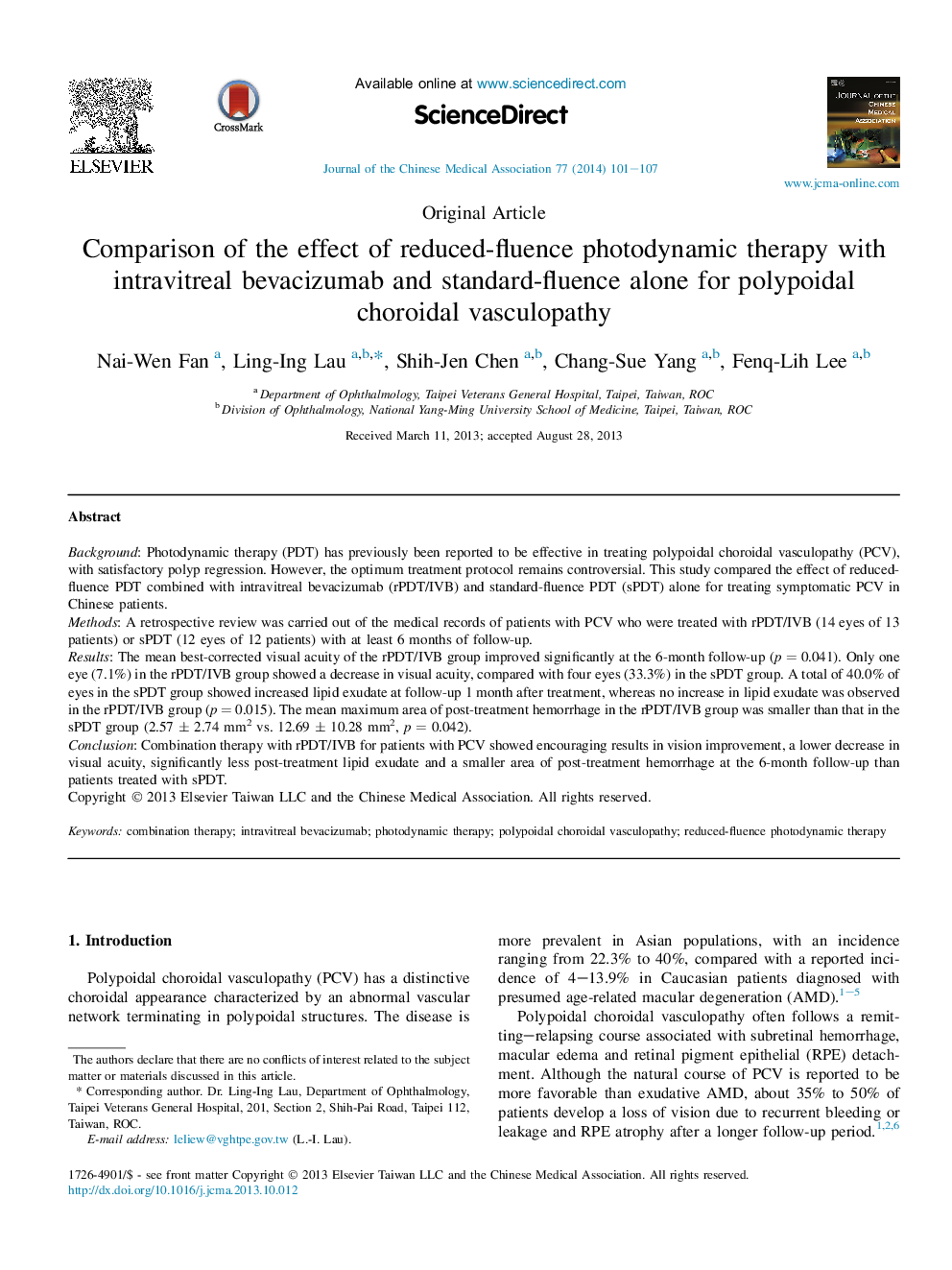| Article ID | Journal | Published Year | Pages | File Type |
|---|---|---|---|---|
| 3476309 | Journal of the Chinese Medical Association | 2014 | 7 Pages |
BackgroundPhotodynamic therapy (PDT) has previously been reported to be effective in treating polypoidal choroidal vasculopathy (PCV), with satisfactory polyp regression. However, the optimum treatment protocol remains controversial. This study compared the effect of reduced-fluence PDT combined with intravitreal bevacizumab (rPDT/IVB) and standard-fluence PDT (sPDT) alone for treating symptomatic PCV in Chinese patients.MethodsA retrospective review was carried out of the medical records of patients with PCV who were treated with rPDT/IVB (14 eyes of 13 patients) or sPDT (12 eyes of 12 patients) with at least 6 months of follow-up.ResultsThe mean best-corrected visual acuity of the rPDT/IVB group improved significantly at the 6-month follow-up (p = 0.041). Only one eye (7.1%) in the rPDT/IVB group showed a decrease in visual acuity, compared with four eyes (33.3%) in the sPDT group. A total of 40.0% of eyes in the sPDT group showed increased lipid exudate at follow-up 1 month after treatment, whereas no increase in lipid exudate was observed in the rPDT/IVB group (p = 0.015). The mean maximum area of post-treatment hemorrhage in the rPDT/IVB group was smaller than that in the sPDT group (2.57 ± 2.74 mm2 vs. 12.69 ± 10.28 mm2, p = 0.042).ConclusionCombination therapy with rPDT/IVB for patients with PCV showed encouraging results in vision improvement, a lower decrease in visual acuity, significantly less post-treatment lipid exudate and a smaller area of post-treatment hemorrhage at the 6-month follow-up than patients treated with sPDT.
